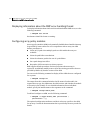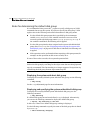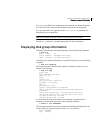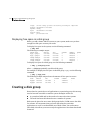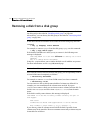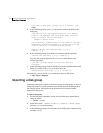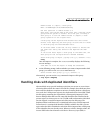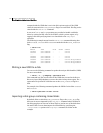
169Creating and administering disk groups
Displaying disk group information
If bootdg is specified as the argument to this command, the default disk group
is set to be the same as the currently defined system-wide boot disk group.
If nodg is specified as the argument to the vxdctl defaultdg command, the
default disk group is undefined.
Note: The specified diskgroup need not currently exist on the system.
See the
vxdctl(1M) and vxdg(1M) manual pages for more information.
Displaying disk group information
To display information on existing disk groups, enter the following command:
# vxdg list
NAME STATE ID
rootdg enabled 730344554.1025.tweety
newdg enabled 731118794.1213.tweety
To display more detailed information on a specific disk group, use the following
command:
# vxdg list diskgroup
The output from this command when applied to a disk group named mydg is
similar to the following:
# vxdg list mydg
Group: mydg
dgid: 962910960.1025.bass
import-id: 0.1
flags:
version: 140
local-activation: read-write
alignment : 512 (bytes)
ssb: on
detach-policy: local
copies: nconfig=default nlog=default
config: seqno=0.1183 permlen=3448 free=3428 templen=12
loglen=522
config disk c0t10d0 copy 1 len=3448 state=clean online
config disk c0t11d0 copy 1 len=3448 state=clean online
log disk c0t10d0 copy 1 len=522
log disk c0t11d0 copy 1 len=522
To verify the disk group ID and name associated with a specific disk (for
example, to import the disk group), use the following command:
# vxdisk -s list devicename
This command provides output that includes the following information for the
specified disk. For example, output for disk c0t12d0 as follows:
Disk: c0t12d0
type: simple




